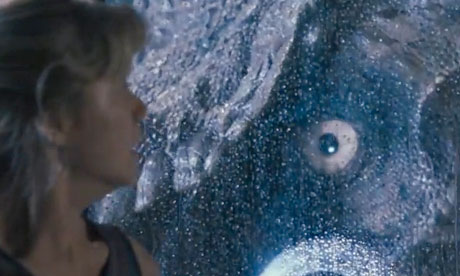The unearthing of a pregnant, 68 million year-old Tyrannosaurus rex in Montana reportedly has the potential to yield the holy grail of paleontological discoveries: T-Rex DNA.
The specimen, says North Carolina State University paleontologist Lindsay Zanno, contains medullary bone, a tissue that develops only in pregnant females near the creature’s egg-laying phase. The presence of the tissue makes it possible that scientists would have the DNA necessary to take the first steps toward reintroducing the creatures to our world.
While the notion might sound fantastic, cloning itself certainly is nothing new. Its history stretches back to the 19th century, when in 1885 German biologist Hans Adolf Eduard Driesch successfully cloned sea urchin embryos. One hundred and eleven years later, Sir Ian Wilmut and Dr. Keith H.S. Campbell stunned the world by cloning “Dolly,” a Finn Dorset sheep, by manipulating adult mammary cells.
And while bringing an extinct creature back to our own world might sound like something out of the realm of science fiction, it’s actually already been done.
In 2009, scientists in Spain published details of a successful cloning of a Pyrenean ibex (or bucardo) from frozen skin. The species had been extinct since 2000, and though the creature survived for only a few minutes, the cloning was technically a success.
The process of resurrecting a dinosaur is admittedly more complicated than that of an ibex. Still, it’s never too early to address the proverbial dinosaur elephant in the room: Assuming we are capable of cloning a T-Rex one day, should we?
The ethical dilemma was of course famously addressed by monsieurs Malcom and Hammond in Steven Spielberg’s 1993 Oscar-winning sci-fi film Jurassic Park:
While I’m a big Jeff Goldblum fan, and the movie itself is largely a morality tale on why humankind should refrain from recklessly dabbling in genetic power (“the most awesome power the world’s ever seen,” claims Dr. Malcom), I actually side with Hammond and the obnoxious lawyer on this question.
Clone away, if for no other reason than I’d love to catch a glimpse of a 20-foot high prehistoric killing machine.
Jon Miltimore is the Senior Editor of Intellectual Takeout. He is the former senior editor of The History Channel Magazine and a former Managing Editor at Scout Media.
















Leave a Comment
Your email address will not be published. Required fields are marked with *